Thermal-Imaging-Based PCA Method for Monitoring Process Temperature
Abstract
1. Introduction
2. Methods
2.1. Principal Component Analysis (PCA)
2.2. Fault Localization through Contribution Plot
3. Thermal Monitoring
3.1. Image Data Preprocessing
3.2. Spatial Information-Based PCA (SIPCA)
3.3. Spatial Information-Based Fault Localization Strategy
4. Experiment Test
- (a)
- The heating module is installed near the water inlet position: (a) once the temperature reaches the set upper value (46 °C), the heater will be turned off immediately; (b) until the detected value drops to the lower limit (44 °C), the heater will be turned on again. Thus, the temperature of the whole system is limited to a certain range. The temperature decreases from the right part to the left part.
- (b)
- All chambers’ water levels are kept at a certain height, e.g., 80%.
- (a)
- Peeling of insulation layer to simulate the heat leakage fault;
- (b)
- Adding another code water inlet in the right chamber of the right tank to simulate an abnormal stable working condition;
- (c)
- Adding another additional code water inlet into the left chamber of the left tank to simulate the situation in which one chamber’s condition is changed and the other three chambers’ conditions remain unchanged.
5. Conclusions
Author Contributions
Funding
Institutional Review Board Statement
Informed Consent Statement
Data Availability Statement
Conflicts of Interest
References
- Venkatasubramanian, V.; Rengaswamy, R.; Yin, K.; Kavuri, S.N. A review of process fault detection and diagnosis: Part I: Quantitative model-based methods. Comput. Chem. Eng. Res. Des. 2003, 27, 293–311. [Google Scholar] [CrossRef]
- Li, Z.; Wang, Y.; Hou, W.; Lu, S.; Xue, Y.; Deprizon, S. Neural Component Analysis for Key Performance Indicator Monitoring. ACS Omega 2022, 7, 37248–37255. [Google Scholar] [CrossRef] [PubMed]
- Viswanathan, R.; Ramesh, S.; Maniraj, S.; Subburam, V. Measurement and multi-response optimization of turning parameters for magnesium alloy using hybrid combination of Taguchi-GRA-PCA technique. Measurement 2020, 159, 107800. [Google Scholar] [CrossRef]
- Tong, C.; Yan, X. Engineering, A novel decentralized process monitoring scheme using a modified multiblock PCA algorithm. IEEE Trans. Autom. Sci. 2015, 14, 1129–1138. [Google Scholar] [CrossRef]
- Zhou, P.; Zhang, R.; Xie, J.; Liu, J.; Wang, H.; Chai, T. Data-driven monitoring and diagnosing of abnormal furnace conditions in blast furnace ironmaking: An integrated PCA-ICA method. IEEE Trans. Ind. Electron. 2020, 68, 622–631. [Google Scholar] [CrossRef]
- Xu, Y.; Shen, S.-Q.; He, Y.-L.; Zhu, Q.-X. A novel hybrid method integrating ICA-PCA with relevant vector machine for multivariate process monitoring. IEEE Trans. Control Syst. Technol. 2018, 27, 1780–1787. [Google Scholar] [CrossRef]
- Lou, Z.; Wang, Y.; Lu, S.; Sun, P. Process Monitoring Using a Novel Robust PCA Scheme. Ind. Eng. Chem. Res. 2021, 60, 4397–4404. [Google Scholar] [CrossRef]
- Jiang, Q.; Yan, X. Just-in-time reorganized PCA integrated with SVDD for chemical process monitoring. AICHE J. 2014, 60, 949–965. [Google Scholar] [CrossRef]
- Fang, H.; Tao, W.; Lu, S.; Lou, Z.; Wang, Y.; Xue, Y. Nonlinear Dynamic Process Monitoring Based on Two-Step Dynamic Local Kernel Principal Component Analysis. Processes 2022, 10, 925. [Google Scholar] [CrossRef]
- AlGhazzawi, A.; Lennox, B. Monitoring a complex refining process using multivariate statistics. Control Eng. Pract. 2008, 16, 294–307. [Google Scholar] [CrossRef]
- Bakdi, A.; Kouadri, A.; Bensmail, A. Fault detection and diagnosis in a cement rotary kiln using PCA with EWMA-based adaptive threshold monitoring scheme. Control Eng. Pract. 2017, 66, 64–75. [Google Scholar] [CrossRef]
- Kourti, T. Application of latent variable methods to process control and multivariate statistical process control in industry. Int. J. Adapt. Control Signal Process. 2005, 19, 213–246. [Google Scholar] [CrossRef]
- Conlin, A.; Martin, E.; Morris, A. Confidence limits for contribution plots. J. Chemom. 2000, 14, 725–736. [Google Scholar] [CrossRef]
- Wu, L.; Gang, C. Soft Sensor Method of Temperature Measurement Using CCD Image Color Based on LS-SVM. Energy Procedia 2011, 13, 2229–2235. [Google Scholar]
- Yan, W.; Li, K.; Huang, X.; Yu, L.; Lou, C.; Chen, Y. Online measurement of the flame temperature and emissivity during biomass volatile combustion using spectral thermometry and image thermometry. Energy Fuels 2019, 34, 907–919. [Google Scholar] [CrossRef]
- Wu, M.; Lei, Q.; Cao, W.; She, J. Integrated soft sensing of coke-oven temperature. Control Eng. Pract. 2011, 19, 1116–1125. [Google Scholar] [CrossRef]
- Singh, R.; Sasikumar, T.; Suresh, S.; Ramanan, G. A Novel Detection of Defects in Al–SiC Composite by Active Pulsed Infrared Thermography Using Data and Image Processing. Trans. Indian Inst. Met. 2020, 73, 2767–2783. [Google Scholar] [CrossRef]
- Feng, R.Y.; Wang, W.X.; Yan, Z.F.; Wang, D.H.; Wan, S.P.; Shi, N. Fatigue limit assessment of a 6061 aluminum alloy based on infrared thermography and steady ratcheting effect. Int. J. Miner. Metall. Mater. 2020, 27, 139–146. [Google Scholar] [CrossRef]
- Glowacz, A.; Glowacz, Z. Diagnosis of the three-phase induction motor using thermal imaging. Infrared Phys. Technol. 2017, 81, 7–16. [Google Scholar] [CrossRef]
- Huang, S.L.; Li, C.P.; Chang, C.C.; Tseng, C.C.; Wang, M.W.; Chen, M.L. Real-Time Monitoring of the Thermal Effect for the Redox Flow Battery by an Infrared Thermal Imaging Technology. Energies 2020, 13, 6717. [Google Scholar] [CrossRef]
- Janssens, O.; Schulz, R.; Slavkovikj, V.; Stockman, K.; Loccufier, M.; Walle, R.V.D.; Hoecke, S.V.J.I.P. Thermal image based fault diagnosis for rotating machinery. Infrared Phys. Technol. 2015, 73, 78–87. [Google Scholar] [CrossRef]
- Wall, M.E.; Rechtsteiner, A.; Rocha, L.M. Singular value decomposition and principal component analysis. In A Practical Approach to Microarray Data Analysis; Springer: Berlin/Heidelberg, Germany, 2003; pp. 91–109. [Google Scholar]
- Lou, Z.; Shen, D.; Wang, Y. Preliminary-summation-based principal component analysis for non-Gaussian processes. Chemom. Intell. Lab. Syst. 2015, 146, 270. [Google Scholar] [CrossRef]
- Zhang, Y.; Li, S. Modeling and monitoring of nonlinear multi-mode processes. Control Eng. Pract. 2014, 22, 194–204. [Google Scholar] [CrossRef]
- Botev, Z.I.; Grotowski, J.F.; Kroese, D.P. Kernel density estimation via diffusion. Ann. Stat. 2010, 38, 2916–2957. [Google Scholar] [CrossRef]
- Li, S.; Hao, Q.; Kang, X.; Benediktsson, J.A. Gaussian pyramid based multiscale feature fusion for hyperspectral image classification. IEEE J. Sel. Top. Appl. Earth Obs. Remote Sens. 2018, 11, 3312–3324. [Google Scholar] [CrossRef]
- Hu, Z.; Hou, Y.; Tao, P.; Shan, J. IMGTR: Image-triangle based multi-view 3D reconstruction for urban scenes. ISPRS J. Photogramm. Remote Sens. 2021, 181, 191–204. [Google Scholar] [CrossRef]
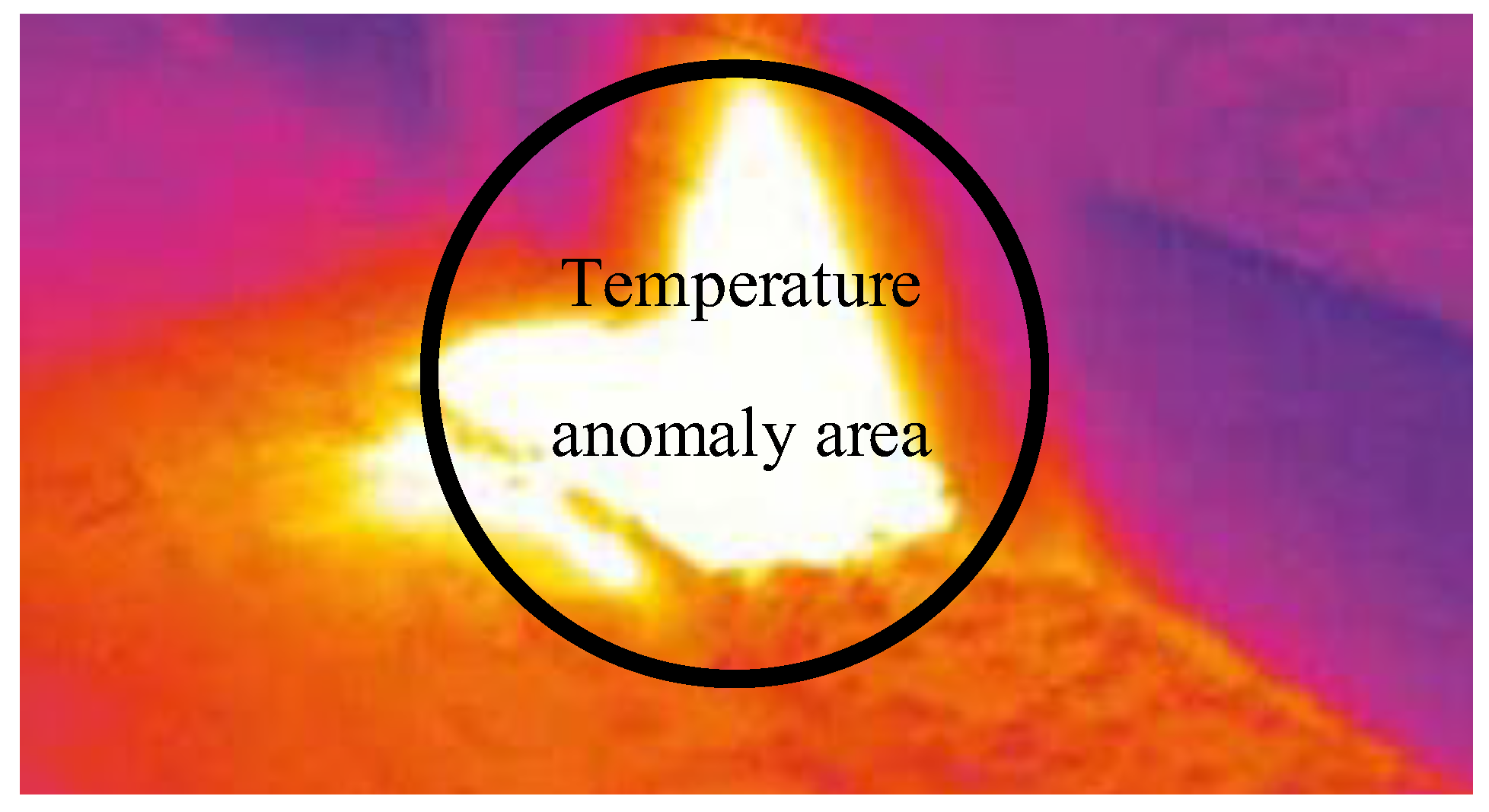
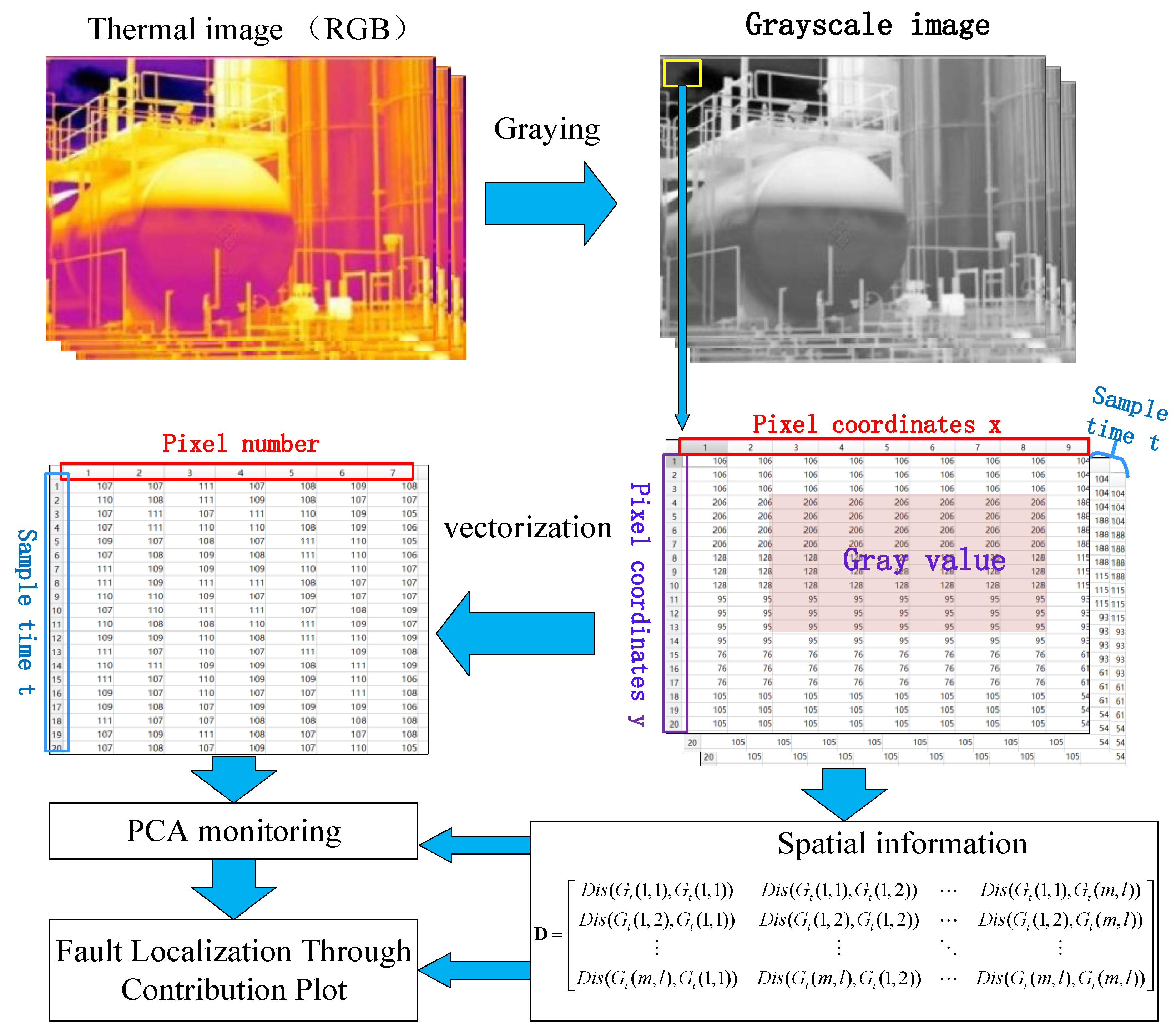
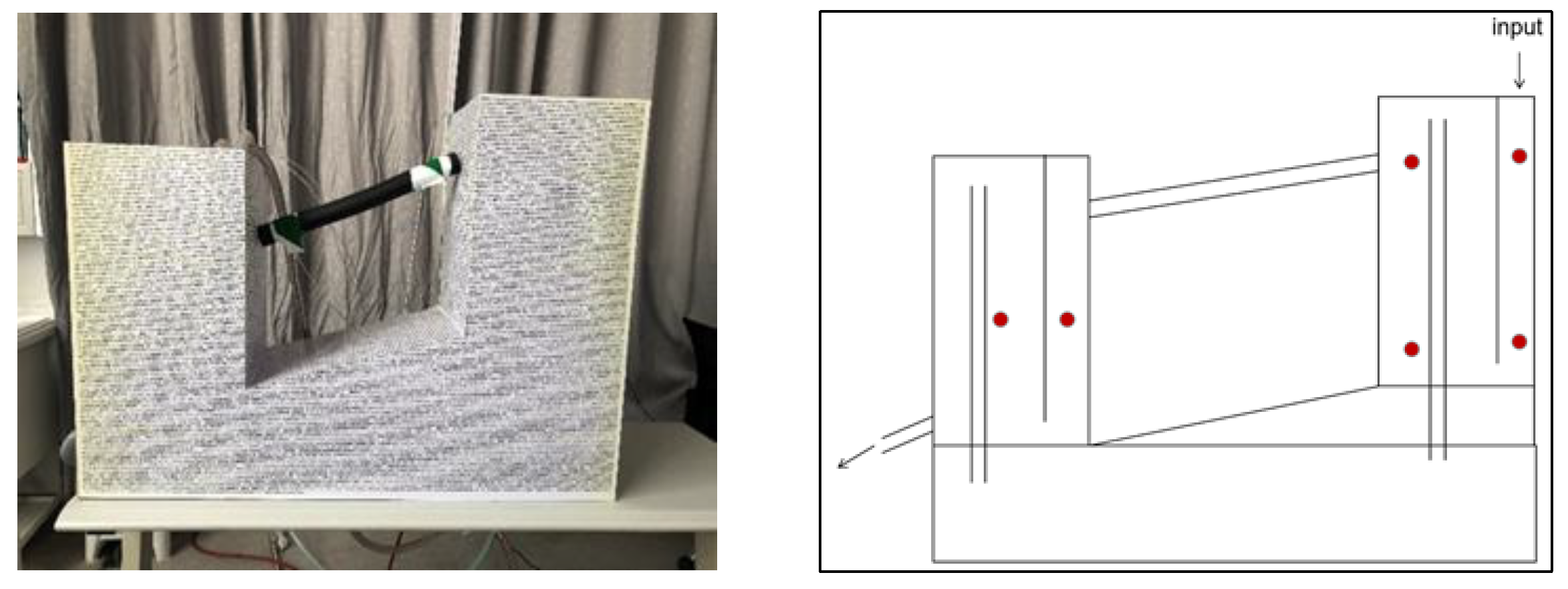
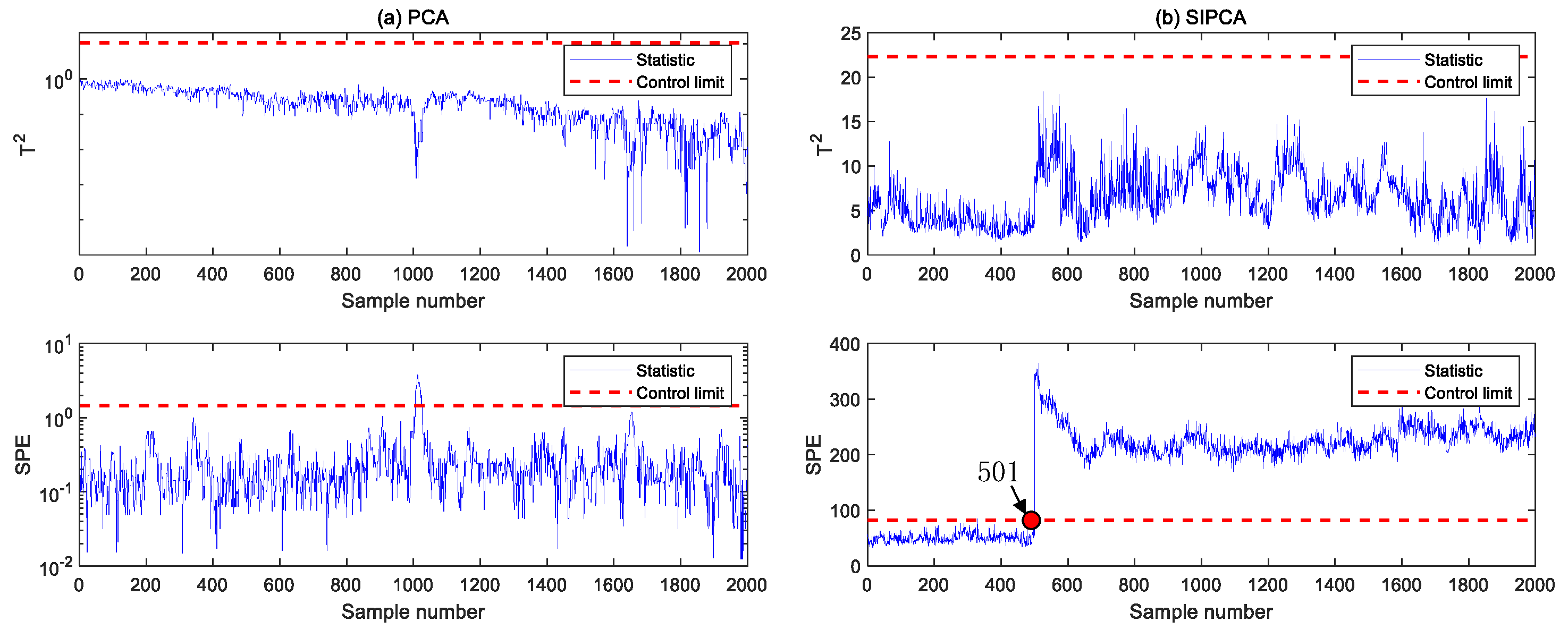
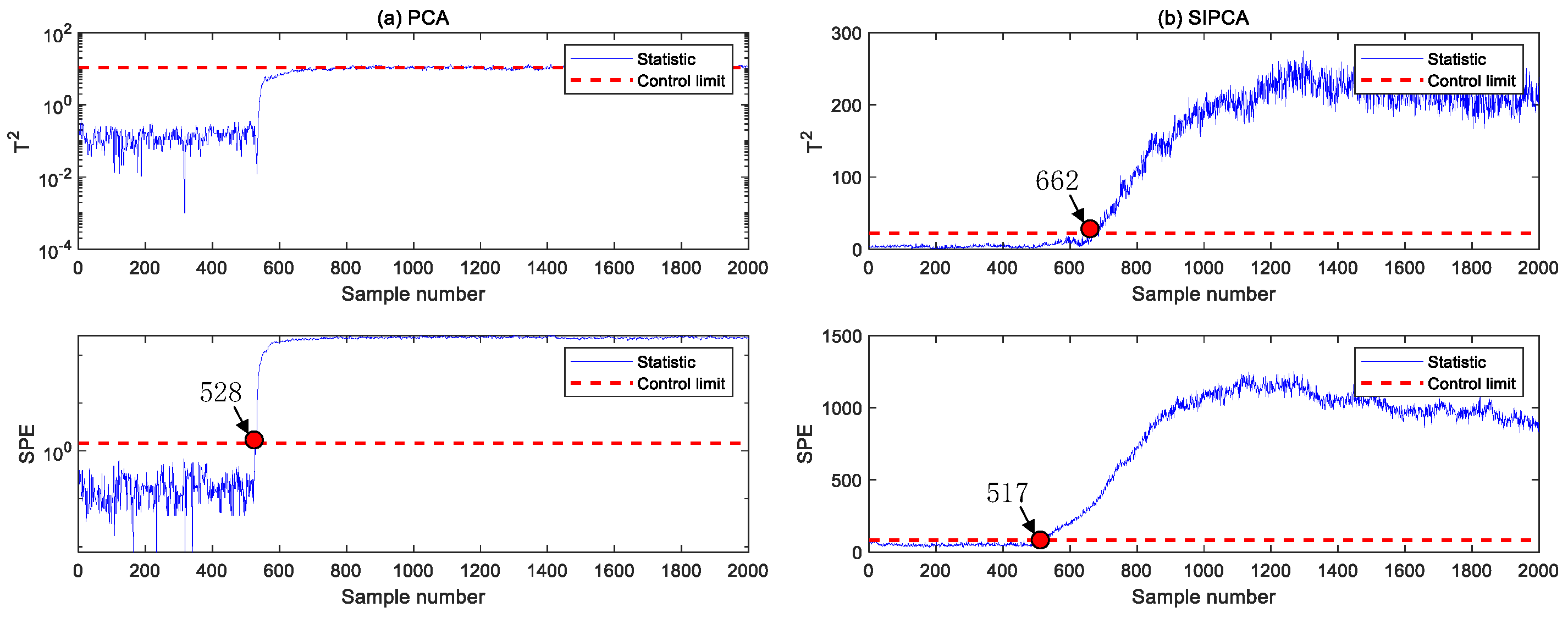

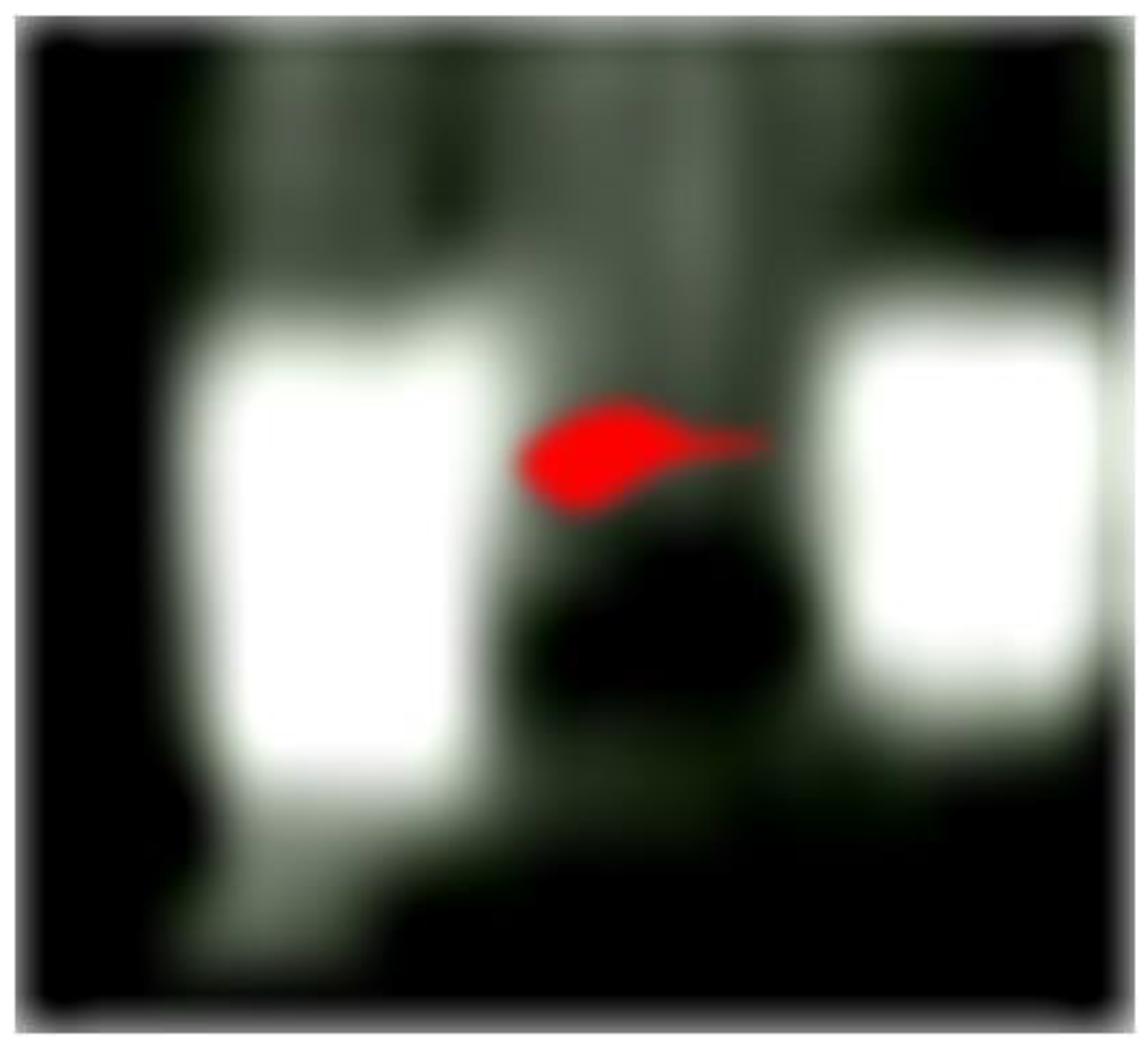
Disclaimer/Publisher’s Note: The statements, opinions and data contained in all publications are solely those of the individual author(s) and contributor(s) and not of MDPI and/or the editor(s). MDPI and/or the editor(s) disclaim responsibility for any injury to people or property resulting from any ideas, methods, instructions or products referred to in the content. |
© 2023 by the authors. Licensee MDPI, Basel, Switzerland. This article is an open access article distributed under the terms and conditions of the Creative Commons Attribution (CC BY) license (https://creativecommons.org/licenses/by/4.0/).
Share and Cite
Lou, Z.; Hao, W.; Lu, S.; Sun, P.; Wang, Y.; Deprizon, S. Thermal-Imaging-Based PCA Method for Monitoring Process Temperature. Processes 2023, 11, 589. https://doi.org/10.3390/pr11020589
Lou Z, Hao W, Lu S, Sun P, Wang Y, Deprizon S. Thermal-Imaging-Based PCA Method for Monitoring Process Temperature. Processes. 2023; 11(2):589. https://doi.org/10.3390/pr11020589
Chicago/Turabian StyleLou, Zhijiang, Weichen Hao, Shan Lu, Pei Sun, Yonghui Wang, and Syamsunur Deprizon. 2023. "Thermal-Imaging-Based PCA Method for Monitoring Process Temperature" Processes 11, no. 2: 589. https://doi.org/10.3390/pr11020589
APA StyleLou, Z., Hao, W., Lu, S., Sun, P., Wang, Y., & Deprizon, S. (2023). Thermal-Imaging-Based PCA Method for Monitoring Process Temperature. Processes, 11(2), 589. https://doi.org/10.3390/pr11020589






